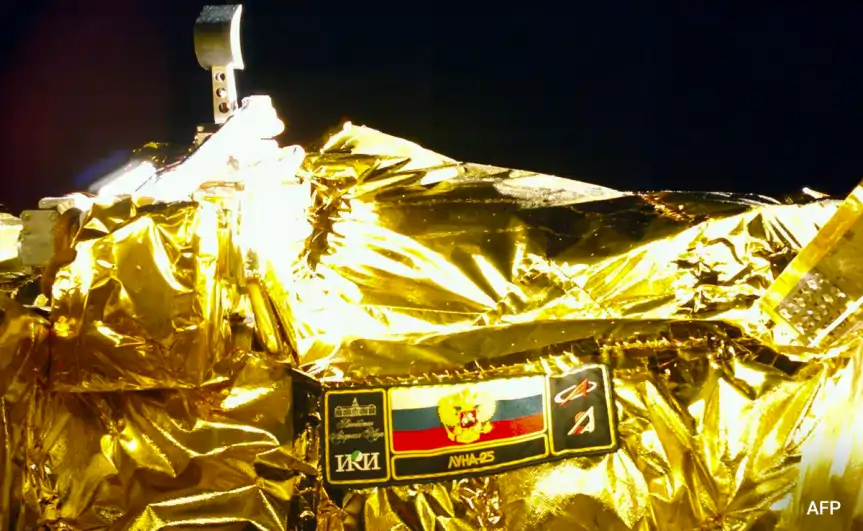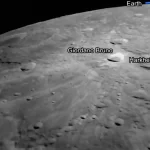Russia’s Luna-25 recent attempt to reach the moon, their first in 47 years, unfortunately ended in failure. The Russia’s Luna-25 spacecraft, part of the Russian space program’s efforts to restore its historical reputation, spun out of control and crashed into the moon’s surface.
The trouble began when the spacecraft was shifted into a pre-landing orbit on Saturday. At 11:57 AM GMT, contact with Luna-25 was lost, leading to its collision with the moon. Roscosmos, the state space corporation, expressed that the craft had entered an unforeseen orbit and ultimately met its end due to its encounter with the lunar surface. To investigate the reasons behind the loss of the Luna-25 craft, a specialized interdepartmental commission has been established.
Pavel Luzin, a specialist in the Russian space program, had previously highlighted the importance of Luna-25 for Russia’s bid to demonstrate independent capabilities in space exploration, even without Western assistance. This failure underscores the decline of Russia’s space dominance from the days of the Cold War, when they achieved milestones like launching Sputnik 1, the first Earth-orbiting satellite in 1957, and sending Yuri Gagarin into space in 1961.
Russia’s Luna-25 mission had aimed to land near the moon’s south pole, gathering geological samples and transmitting data about water or its elemental components. This information could be pivotal in planning future human settlements on the moon. Yet, the primary objective was to prove Russia’s capacity to successfully launch a lunar landing mission, overcoming past failures, shifts in scientific personnel, sanctions, and isolation due to conflicts like the one in Ukraine.
Surprisingly, Russian state television relegated the news of Russia’s Luna-25 loss to the eighth spot in its noon broadcast, allotting a mere 26 seconds of coverage. This comes in stark contrast to the prolonged coverage of other events, such as fires in Tenerife and a celebration for Russian pilots and crews.
Russia’s rivals, including India, China, and the US, are all making strides in lunar exploration. India’s Chandrayaan-3 mission, set to land on the moon’s south pole, is scheduled for August 23. Russia’s Luna-25 failure could hinder Russia’s aspirations to be the first to retrieve frozen water from the moon’s south pole.
Anatoly Zak, who operates the RussianSpaceWeb website focused on Russian space endeavors, highlighted the flight control system’s vulnerabilities that required multiple fixes. Zak also noted that Russia skipped the customary practice of attempting a simpler orbital mission before undertaking a more complex moon landing, unlike the traditional approach of countries like the Soviet Union, the US, China, and India.
- Former Employees Accuse Presidential Candidate Vivek Ramaswamy’s Company of Securities Law Violations
- Donald Trump’s Potential Supreme Court Strategy in Legal Battles
- Chandrayaan-3 sent pictures of Moon and Earth
Russian scientists have been vocal about the detrimental impact of weak management, unrealistic projects, corruption, and declining scientific education on the space program’s effectiveness. Post-Soviet Russia faced failures with space landing missions such as Mars-96 in 1996 and Phobos-Grunt in 2011, both of which crash-landed into the Pacific Ocean.
Although the Russia’s Luna-25 mission successfully departed Earth’s orbit, its ultimate failure raises questions about the prospects of Russia’s moon program. Several upcoming missions, like Luna-26 and Luna-27, could face delays or even cancellations. As space exploration blogger Vitaly Egorov highlighted, the timeline for these missions, initially set no earlier than 2027, might now be uncertain.









